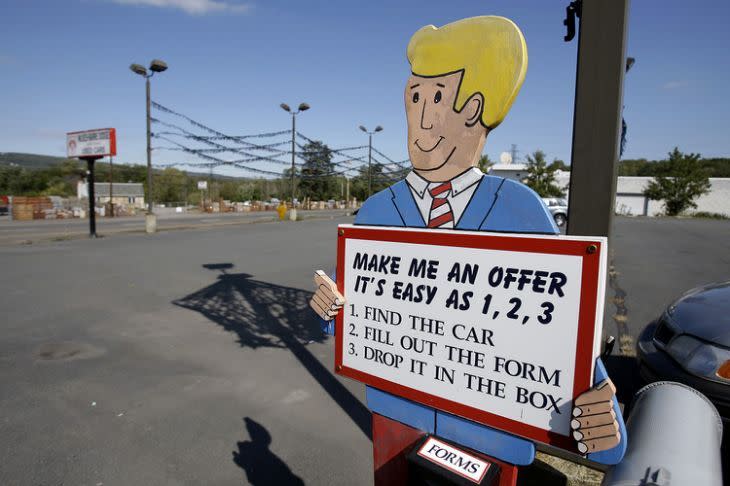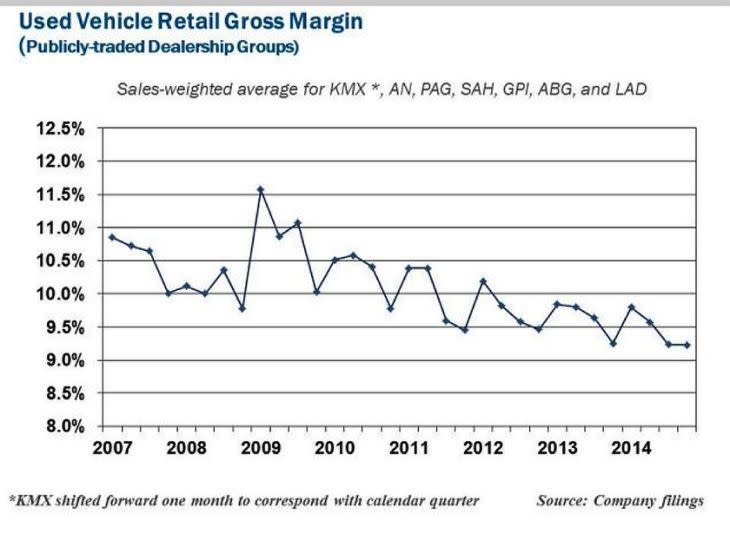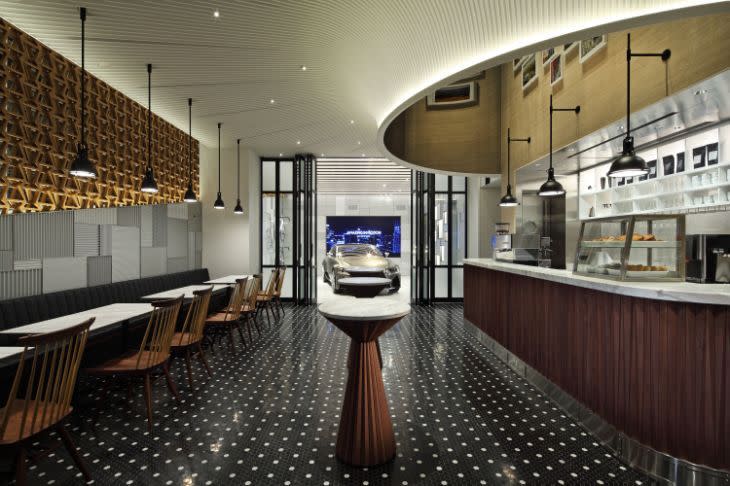Confessions of a Used-Car Dealer: 6 Myths About My Job

This story is being featured as part of our “Yahoo Best Stories of 2015” series. It was originally published in March 2015.
It’s a glamorous life. You’re surrounded by colorful flags, with personalities like walking cartoons, and everything you buy turns into a pot of gold for you (and a rolling disaster for your customer three months down the road.)
Not quite.
The truth is that most used-car dealers are always one missed step away from failure. On every deal, between buying a car at a wholesale auction that’s worth the flip, and successfully selling it to someone who has the resources to pay for it, there is an awful lot in the middle that can and will trip you up. People lie. Repairs can be shoddy or misdiagnosed. The floorplan company that gives you all that money to put cars on your lot has to get paid, always, and the wholesale auctions are pretty much the most cut-throat free market you can ever imagine.
You compete against everyone, hundreds of large and small operators, and everyone competes against you. Often times your competitors will have financial resources that compare to yours in the same way NATO stacks up against the army of Luxembourg.
There is a lot of myth about the easy money in this business where nearly everything you deal with is downright expensive and imperfect. Let’s start with the one thing people always seem to believe when it comes to the so-called affordable dealer auctions.
Car Auctions Are Cheap! : Yes, there are cheap cars at the dealer auctions. They are at the “inop” sale, where cars that don’t run are usually worth more dead than alive. The cars that actually run? Well, the popular cars that look good typically go for all the money in the world. And the less popular vehicles typically have a spread in the hundreds instead of the thousands — if you find a good one. Get a bad one and you just got stuck with a four-figure loss.

Used vehicle retail profits. Source: Manheim Group
Profits Are High: Before 2008 happened I managed to average about $1,700 in profit per unit for a cash deal. It was an easier time in the business to hit em’ where they ain’t and find a good vehicle. Today, my cash profits are less than half that amount, which is why I self-finance many of my vehicles. On those deals, I am typically under by $2,000 to $3,000 when I first finance it to a stranger — and then wait about nine months to get my money back. That doesn’t always happen.
Fixing Cars Is Easy: A lot of people think that you can just buy a ton of cars, put most of them on the front line, and then give the remaining ones a simple repair or two to make them retail ready. In truth, anywhere from 20 percent to 70 percent of what you buy will be a challenge to bring up to spec, and some older cars have nagging terminal issues that make them unprofitable.
Most Buyers Want Value: Not true. Not even close to true. Most buyers shop for price in the beginning, but they buy based on presentation once they come in person. This is why dealers and manufacturers invest billions into the look of their dealerships and also why large used car retailers rarely have the lowest prices in the marketplace. Just like every successful retail operation, the consumer buys with their eyes.

It’s Easier To Sell Based On Volume: The infrastructure you need to put 500 deals together is far more complex and cost intensive than what you need to successfully sell 150 vehicles. Mechanics, detailers, sales and marketing personnel — the act of juggling more people and making sure they do everything right is incredibly challenging and is usually rife with expensive failures in the beginning. This is especially true when you’re dealing with a product that is imperfect when you first get it. Building volume is slow, difficult, and even unprofitable at times when it comes to the real-world business of operating a car dealership.
Anyone Can Do It: There is a lot to buying ‘good’ cars, finding the right mechanics who will get the job done at a reasonable price, learning to market to an audience that is hell-bent on finding the best car for the least amount of money, and tolerating all the BS and pathological liars that come with certain customers, contractors and employees. To be brutally blunt, this is not a low-stress business.
If you love cars, well, it isn’t enough. You have to be more than able to deal with stress and imperfections, and the public is highly intolerant of anything less than that beautiful image of a clean, detailed used car. Those who have the attitude that things are “good enough” when it comes to smells, stains, and the reconditioning process, simply don’t survive in the long run.
So you want to be a dealer? Someday? My advice is simple. Start with one vehicle at a time. Don’t quit your day job just yet, and be persistent with your patience. Sometimes it’s the only worthy weapon you have when dealing with this imperfect world.

